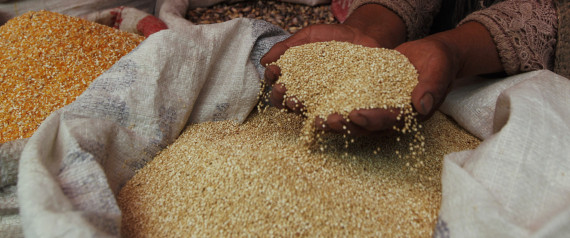Even for people who don’t enjoy eating mushrooms, there is still intrigue in learning how they grow. There’s something mystical and magical—I mean I do get a lot of people asking about “magic” mushrooms but I always comment that I think all mushrooms are magical.
I really like being able to watch a culture start from a little piece of tissue. From one tiny piece you’re able to grow thousands and thousands of pounds of food. We start our cultures in petri dishes. To create that culture you can take a piece of a mushroom—you can take any mushroom out of a grocery store and put that into a petri dish—and it will grow an exact replica of the original mushroom.
Once I establish the culture on the petri dish, I put it into a test tube. The test tube is my master culture that I put into a refrigerator, and I can keep that for five to ten years. You want to keep track of each of your generations and how far you’ve separated it from the initial spawn; mushrooms, unlike plants, break down and cause genetic mutations really quickly if you don’t keep track. All of our bags are labeled.
We grow our mushrooms first in grain. I use barley or millet. We soak the grain in water then sterilize it in a pressure cooker for about four hours. After that it we cool it down and put it in front of hyperfilters that blow sterile air out at us so we can open up all the bags of grain without fear of things (i.e. competing fungi or bugs) flying into them. Then we take the mycelium—the fungal network of the mushroom from the petri dish—and add them to the sterile grain. That goes out on the shelves to grow. How long depends on the species; oysters usually take about two weeks on grain. Then from there, we break the mycelium back up into grain and put it into our next substrate, which is a sawdust mixture. That’s what will eventually produce mushrooms.
We set up fifty-pound barrels with stacks of forty sawdust bags each, and then steam-pasteurize them. We’re lucky to live in an area where there’s lots of wood substrate, so it’s easy to get cheap sawdust. We take the sawdust and mix it together with barley and oat flour, and that gives it the carbohydrates and sugars to make the mycelium happy. If we just put it in sawdust, it wouldn’t work—maybe it would produce one or two mushrooms. We go through three or four yards of sawdust every other week, and to see that sawdust turned into food for people, that’s really rewarding for us.
We have a regular greenhouse that we’ve tarped so we can control the sunlight and the heat. A lot of people think mushrooms need to grow in complete darkness, but that really isn’t true: they like a little bit of light. We just open up the bags in here and give them high humidity. They like 80 to 90 percent humidity. As long as they don’t get too hot, usually we can grow year-round. When the mushrooms are grown, we’ll do one long slice down the middle of the bag—then after a while, when the bag ages to about a month or so, we’ll do a second slice, just to try to get as much out of it as we can.
Every mushroom is different. Oysters usually take about four weeks from start to finish; shiitakes are about forty-five to sixty days. This is why the prices are different with mushrooms, generally; some take longer than others to grow. Maitake takes up to seventy days to get mushrooms, so that’s why they’re $18 a pound in the grocery store.
Ria Kaelin, Christian’s wife and partner in the business offers a concluding thought.
We so traditionally think of growing food as you put a seed in the dirt and nurture it and it will give you something. Whereas with this, you go, How does that even work? Almost like we’re not connected to that microbiological world. We are! But we don’t sometimes stop to see it.
via The Magic of Mushrooms | Lucky Peach.








 THE BEGINNING
THE BEGINNING



